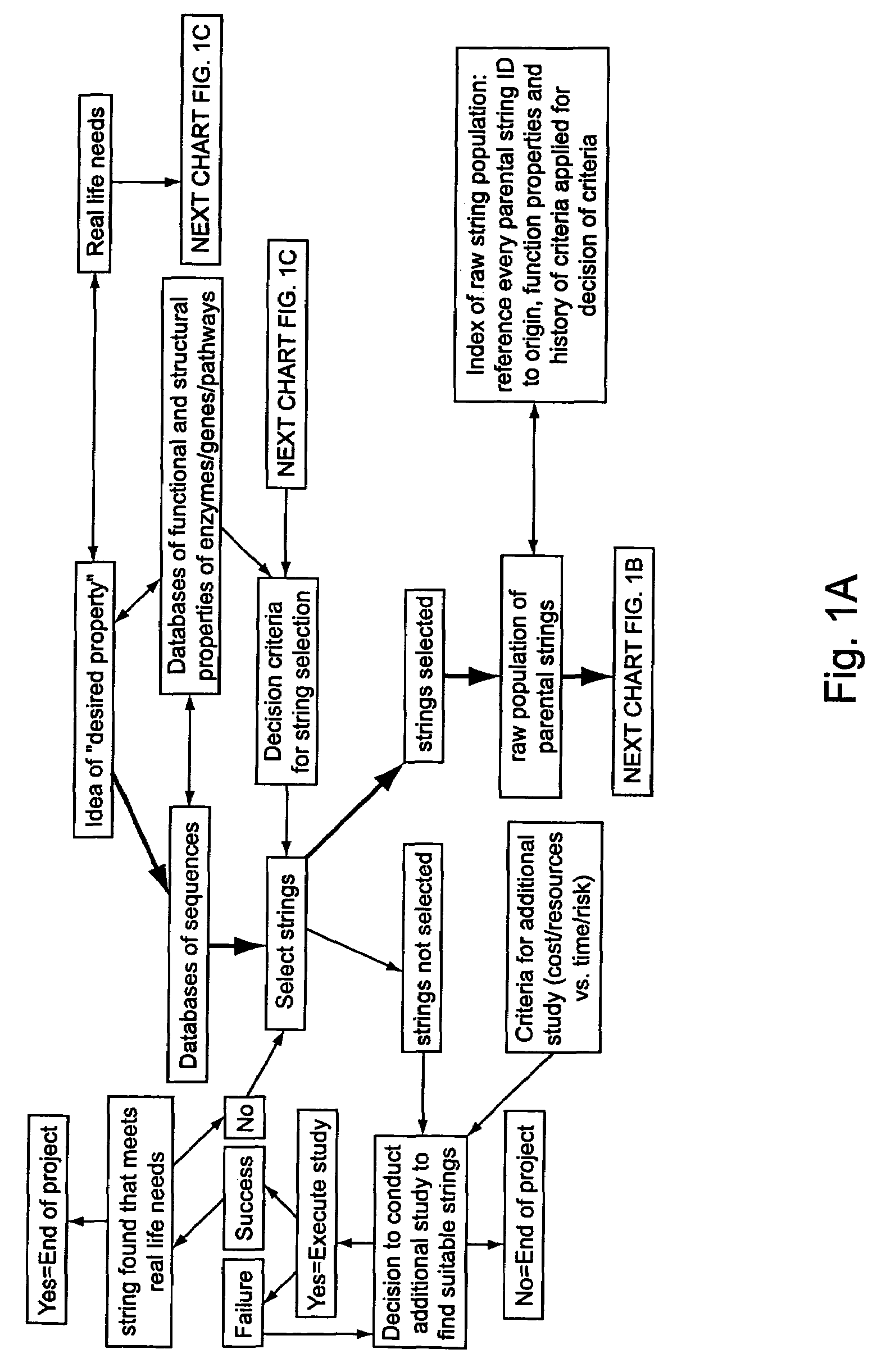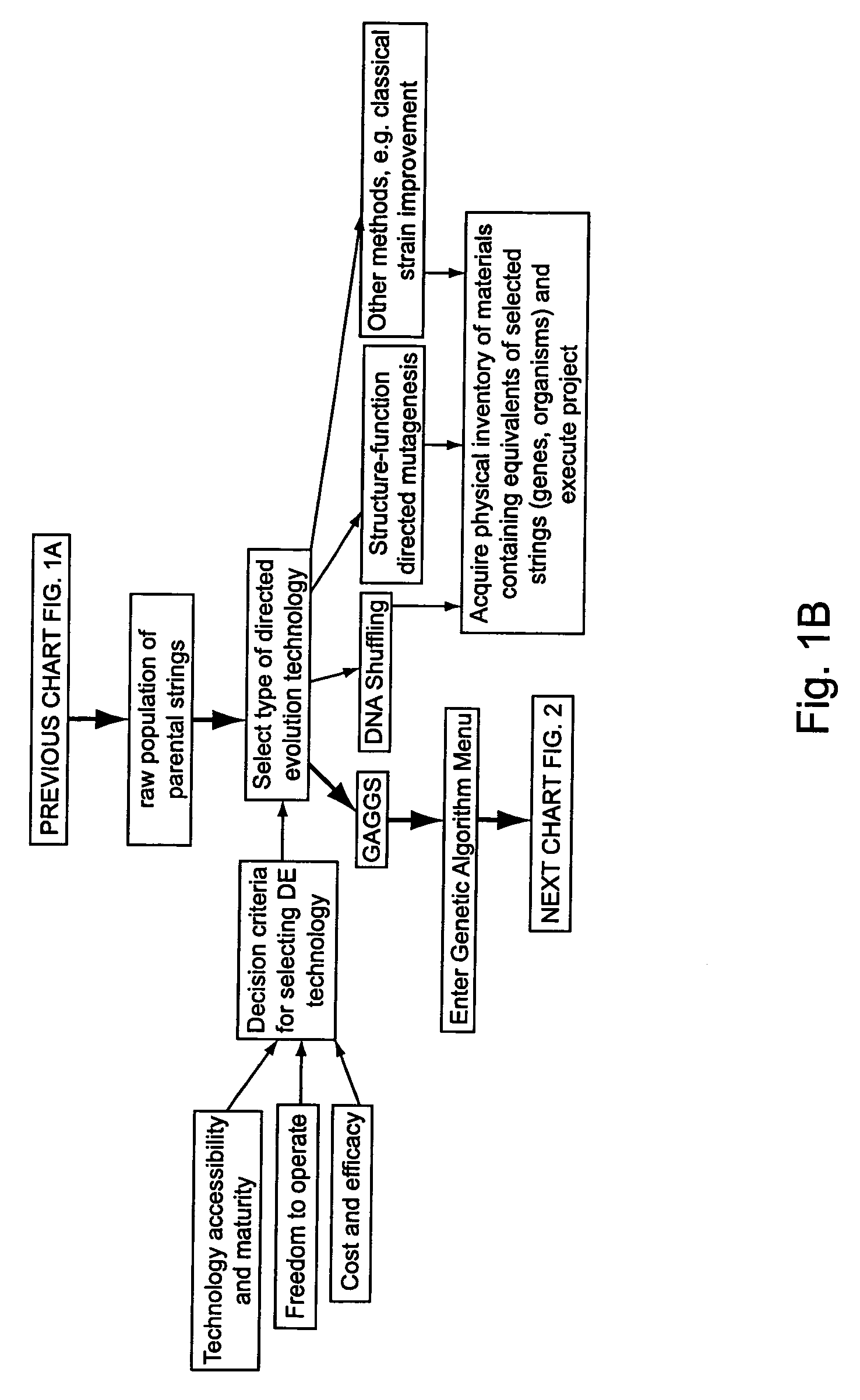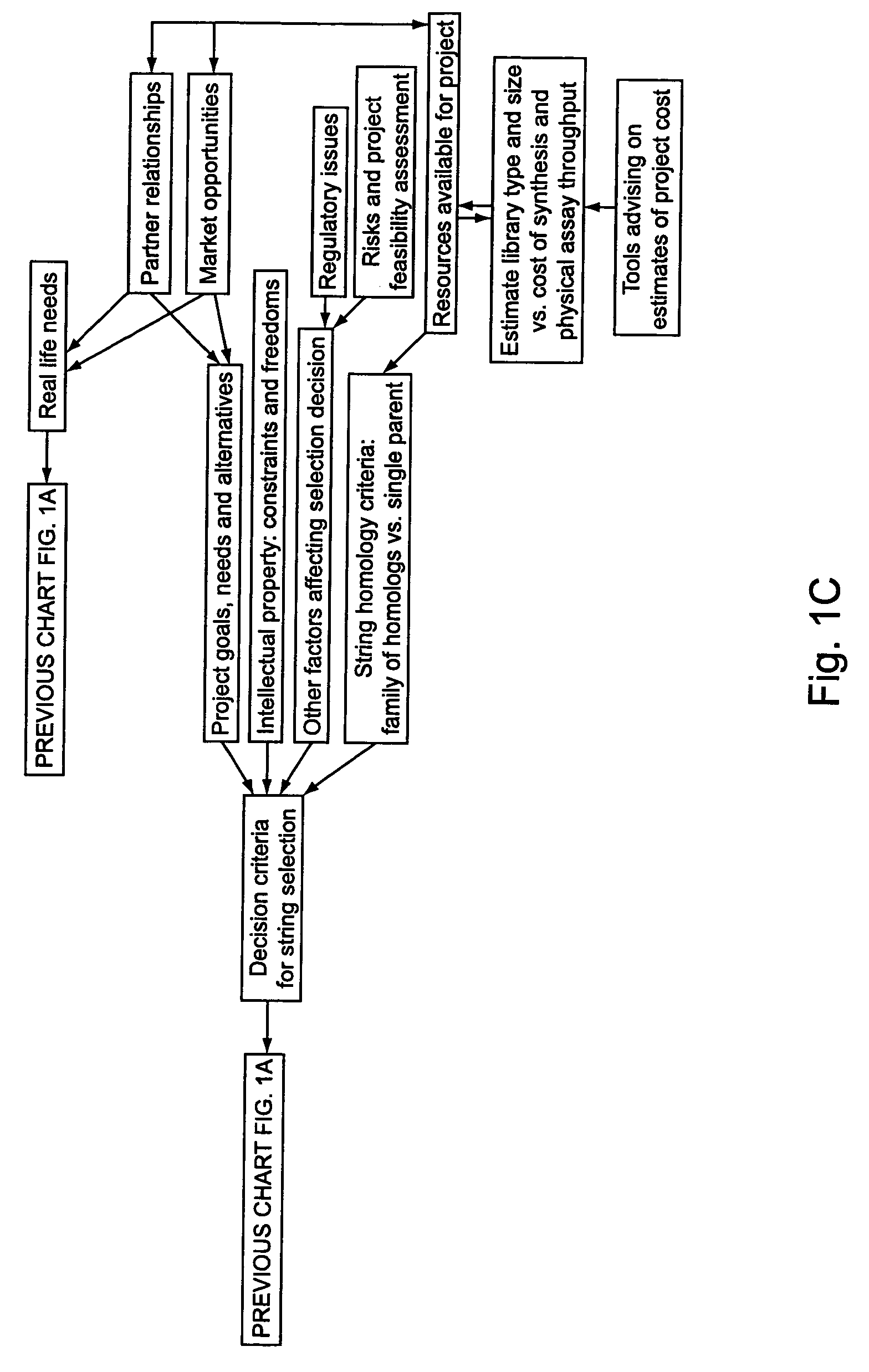Identifying oligonucleotides for in vitro recombination
a technology of in vitro recombination and oligonucleotide, which is applied in the field of gene expression algorithms to nucleic acid shuffling methods, can solve the problems of increasing the length of oligonucleotides
- Summary
- Abstract
- Description
- Claims
- Application Information
AI Technical Summary
Benefits of technology
Problems solved by technology
Method used
Image
Examples
example processing steps
for Reverse Translation and Oligo Design
[0159]Automatic processing steps (e.g., performed in a digital system as described herein) that perform the following functions facilitate selection of oligonucleotides in synthetic shuffling techniques herein.
[0160]For example, the system can include an instruction set which permits inputting of amino acid sequences of a family of proteins of interest of interest.
[0161]These sequences are back-translated with any desired codon usage parameters, e.g., optimal usage parameters for one or more organism to be used for expression, or to optimize sequence alignments to facilitate recombination, or both. For example, codon usage can be selected for multiple expression hosts, e.g. E. coli and S. cerevisiae. In some cases, simply optimizing codon usage for expression in a host cell will result in making homologous sequences more similar, as they will lose their natural species codon bias.
[0162]Sequences are aligned, and a consensus sequence is produce...
example -
Example-Motif Filtering
[0234]Selections or screens often yield too many “positive” clones to cost-effectively sequence all of the positive or negative clones. However, if sequence motifs are identified that are enriched or depopulated in either the positive or the negative clones, then this bias is used in the construction of synthetic libraries that are biased toward “good” motifs and biased away from “bad” motifs.
[0235]If each contiguous selected region or motif (e.g., the selected window can be, e.g., a 20 base region) is thought of as a separate gene or gene element, one can measure the change in gene frequencies before and after a selection or screen. Motifs that increase in frequency in the positive clones are characterized as “good” and motifs whose frequency is reduced in the positive clones are characterized as “bad.” Second generation libraries are synthesized in which the library is selected to be enriched for good motifs and depopulated with bad motifs, using any filteri...
example 1
Decision Tree for Example GAGGS Process
[0294]A set of flow schematics which provide a general representation of an exemplary process of Directed Evolution (DE) by GAGGS are enclosed (FIGS. 1-4). FIG. 1 provides an example decision making process from an idea of a desired property to selection of a genetic algorithm. FIG. 2 provides a directed evolution decision tree from selection of the genetic algorithm to a refined library of parental character strings. FIG. 3 provides example processing steps from the refined parental library to a raw derivative library of character strings. FIG. 4 processes the raw character strings to strings with a desired property.
[0295]Generally the charts are schematics of arrangements for components, and of process decision tree structures. It is apparent that many modifications of this particular arrangement for DEGAGGS, e.g., as set forth herein, can be developed and practiced. Certain quality control modules and links, as well as most of the generic ar...
PUM
 Login to View More
Login to View More Abstract
Description
Claims
Application Information
 Login to View More
Login to View More - R&D
- Intellectual Property
- Life Sciences
- Materials
- Tech Scout
- Unparalleled Data Quality
- Higher Quality Content
- 60% Fewer Hallucinations
Browse by: Latest US Patents, China's latest patents, Technical Efficacy Thesaurus, Application Domain, Technology Topic, Popular Technical Reports.
© 2025 PatSnap. All rights reserved.Legal|Privacy policy|Modern Slavery Act Transparency Statement|Sitemap|About US| Contact US: help@patsnap.com



